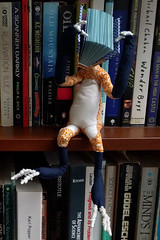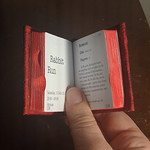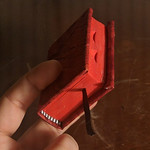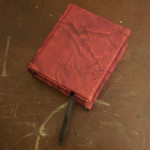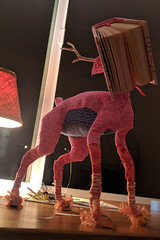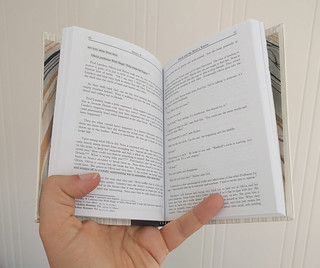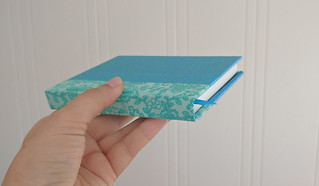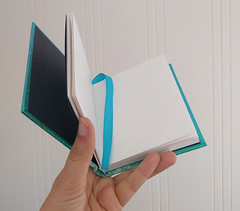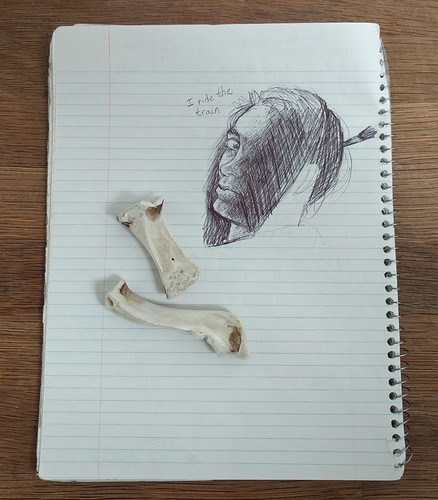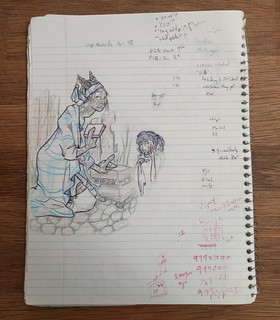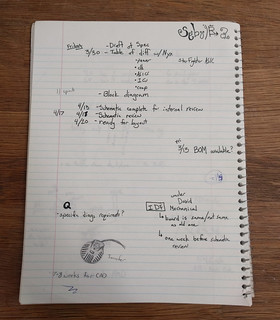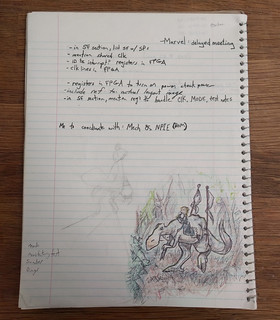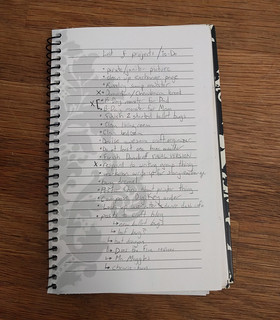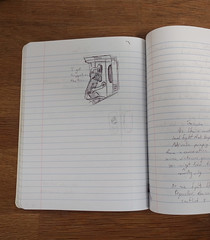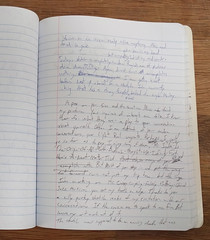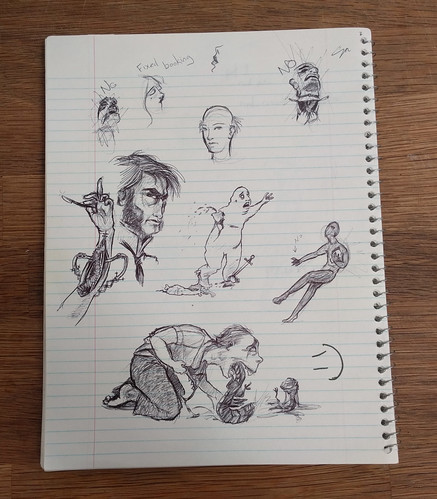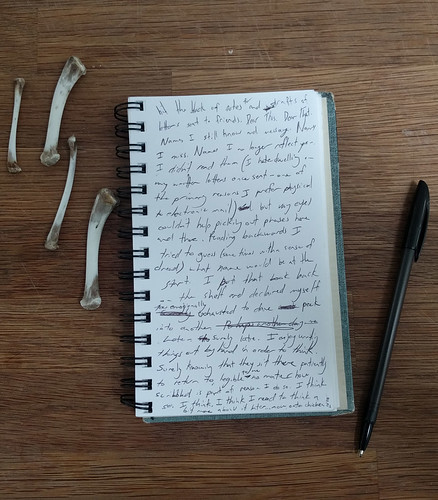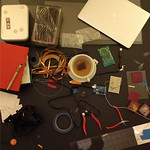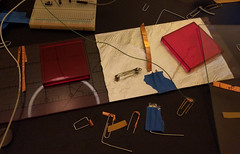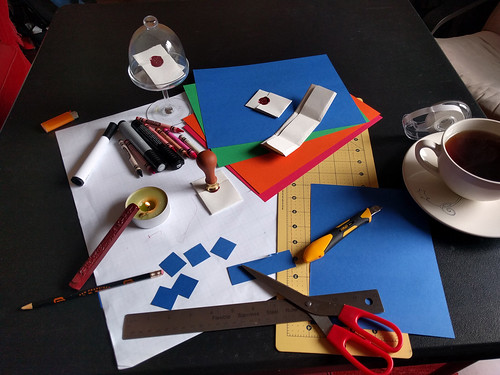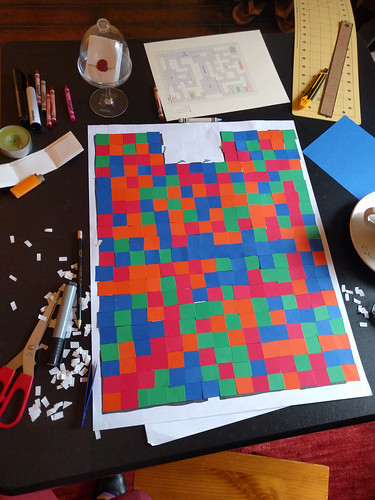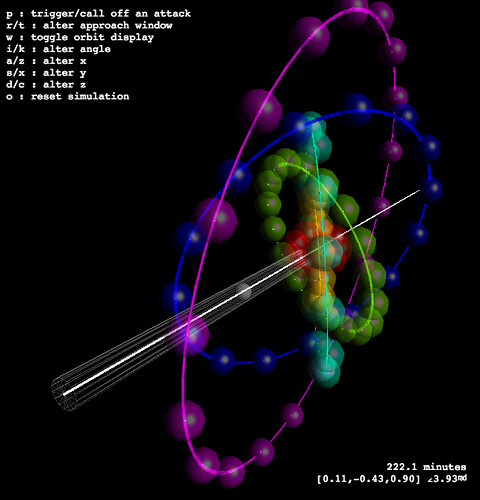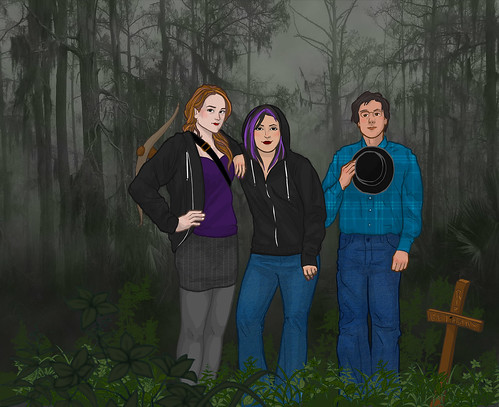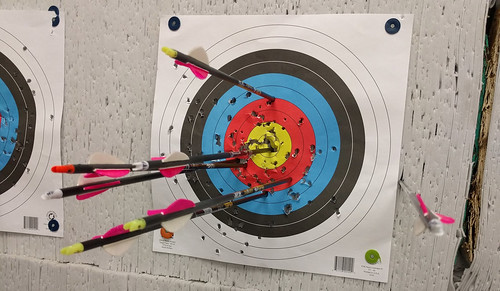Interested in trying your hand at tiny bookbinding or a fan of old French poetry? I’m in love with my mini books and want to share them with you! While I enjoy my fancy cased & trimmed copy this version is very accessible to anyone who is curious.
Supplies:
- the text [PDF link via Google Drive]
- 2 pages, front and back
- print flipping “on the short side”
- I print at “HQ 1200 DPI” settings but probably not needed
- 3 sewing needles
- thread (I work with 3 strands of embroidery floss)
- scissors
- T-pin or awl or tapestry needle (for hole punching)
- Scrap paper (ideally firm, card-stock like) for guides
- bone folder or some sort of straight edge to help make crisp folds
- (optional) small rings to make hang-able
- cover materials (could be easily substituted with chip board or thick cardboard)
- thin balsa wood
- balsa wood saw (I normally use this to cut holes in my signatures)
- tiny drill
- (optional) ink/stain to fancy that wood up
- sand paper (100 grit for basic smoothing, 220 if you want to touch it up)
- Print Text - make sure it’s flipped “on the short side” -- if you don’t the pages will be “upside down” on the opposite side of the sheet. I scale up to fill printed page, but that’s not needed, it’ll gain you just a little bit of extra room. Be careful not to lose the markings depending on your printer/paper size!

- Cut Text - There’s very thin lines dividing each signature row. Cut carefully! Would definitely recommend cutting by hand. Pick one side of the paper and use that as the guide for all your cutting (there may be some skew front/back due to printer variance)

- Fold Signature - there are very tiny marks at the page edges and in the center of a folio. Some markings may have been trimmed off in step 2- don’t worry. Check the top/bottom/front/back for alignment markers.
- There will be very minor overhand on the start/end of each row
- Look for the pair of pages with consecutive numbers (should be on the left hand side of the signature. Don’t see it? Turn signature over and check again. These will be the “top” of the zig-zag.
- Each “fold” of the zig-zag is 2 tiny pages (a folio)

- Make sure you’re checking/enforcing horizontal alignment. Line marks up left-right with the tiny ticks then lightly “pinch” the signature top and bottom around center of folio to make sure it’s level as you crease the fold. Optimize for “level” folds, then optimize for centering the tick-marks.
- “Bone down” all your creases after you’re done zig-zag folding (take a bone folder or something with a hard level edge and rub the folds to make them crisp-- just like origami)
- Fold folio in half (the consecutive pages should be the center of the fold) and bone down the spine

- Punch Holes - in this step you’ll be punching holes in the center fold of each folio. (Normally I cut them with a balsa saw blade but these are too tiny/finicky)
- take your scrap paper (junk mail is a great source for this) and cut it to the about the size of a signature. It should be wider than the signature (extend past the folded pages’ edges) but exactly the same height!
- Mark the HEAD and make sure it’s always at the top when punching. Mark & poke 3 holes in it. Center one and then... you know... one above and one below that. Don’t punch them too close to the edge or each other!
- Tuck the guide inside each signature and punch those holes all the way through the signature. I put some scrap cardboard behind it to help but sometimes I just hold it in my hand and punch w/ no backing
- Prep Cover - this is where variants can some in- I prefer to sew on a single cord for the necklaces or if I’m putting it in a case but this book is coptic-like/exposed spine so focusing on that
- Figure out your final signature size- how much are you willing to trim off the ends? This depends on how neat your folding/printing went. Make another guide from scrap paper. This should be the same height as the signatures but shorter than the folded pages’ width- it should be the width of what you want the final page to be.
- Using the guide, cut out your covers to that exact size (error larger). Balsa wood & saw wasn’t instantaneous but totally doable. Just be patient (< 5min of sawing?)
- Drill holes (or punch if you can) at the correct heights (use initial guide you made). Two holes per signature hole are required- put them near the edge/near each other but no so close that your material will split/crack/be weak. Use best judgement.
- (optional/hindsight) I didn’t do this, but if you can-- put a small divot at the furthest-from-spine hole on the inside for the knot to rest in.
- (optional) stain/color/paint/decorate your cover
- Start Sewing - select your thread. You need 3 needles, threaded with the same amount of floss. To calculate use the formula “height of signatures” x “number of signatures + 1″ - for this sewing there’s already extra built into that. The next steps need be applied to each of the 3 signature rows

- Put a knot at the end of the thread and run it through the back cover in the furthest-from-spine hole, going from “inside” to “outside” of cover.
- Loop back and come in from the closest-to-spine hole, going from “outside” to “inside” of cover.
- Make a loop, you’re going to need to keep this loose and will tighten it later. Exit the same hole you just came through, going from “inside” to “outside” (if you pull too hard, the loop will just pop out and you’ll have to go back to step 6.2).
- From the “outside” of the cover, bring the needle around the spine-edge of the cover and go through the loop you just made.
- Tighten everything.
- You are now read to sew signatures
- Sew a Signature - each signature is the same until you reach the front cover

- Trim left & right edge of signature using the guide you made in step 5.1 using scissors (you’re cutting through 5 sheets in one go- hard but not impossible). This separates all the pages and is done at the last moment to try and make things easy for sewing. You could do this after assembling the book if you’d like.
- Run all the needles through the holes they correspond to going from outside of signature to inside of signature.

- Each needle exists the signature in the following order. This requires tension (the signature should be flush against the text block) and precision. High dexterity step, see photo above for advice on how to hold it.
- Top thread goes out through middle hole
- Middle thread goes out through bottom hole
- Bottom thread goes out through top hole
- Tighten all the threads, make sure it’s snug, and then bone down the spine again as best you can now that it’s part of the text block
- (optional) If you wanted to add rings, sew them in between signatures 5-6, 6-7, and 7-8.
- (optional/hindsight) I forgot to “kettle” my stitches- you could do so here if you know how but I’m not going into details

- Finish / Cover - the short of it is “do everything you did in step 6, but backwards”. Each thread is finished the same way:
- go from the “outside” to the “inside” of the closest-to-spine hole on the front cover
- loop around the thread going from the signature to the cover
- go back out the same hole you just came in through ( “inside” to “outside” of cover )
- Come in through the furthest-from-spine hole ( “outside” to “inside” of cover )
- Nudge and jostle everything so that it’s as tight as possible
- Tie a knot & cut the thread! (wait to do this step on all the threads at the same time)
You’re done!



